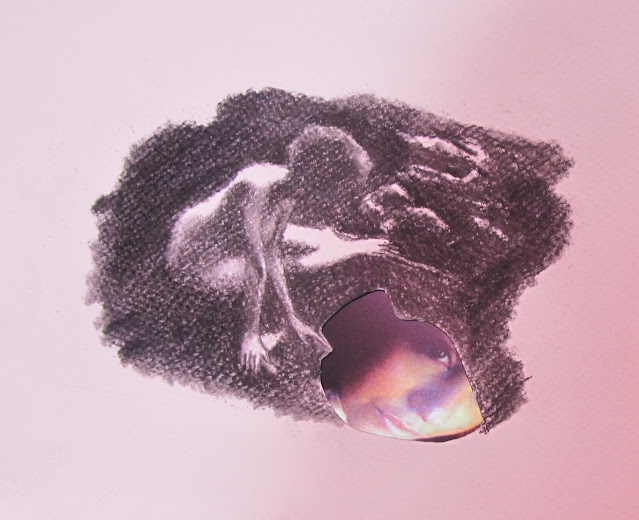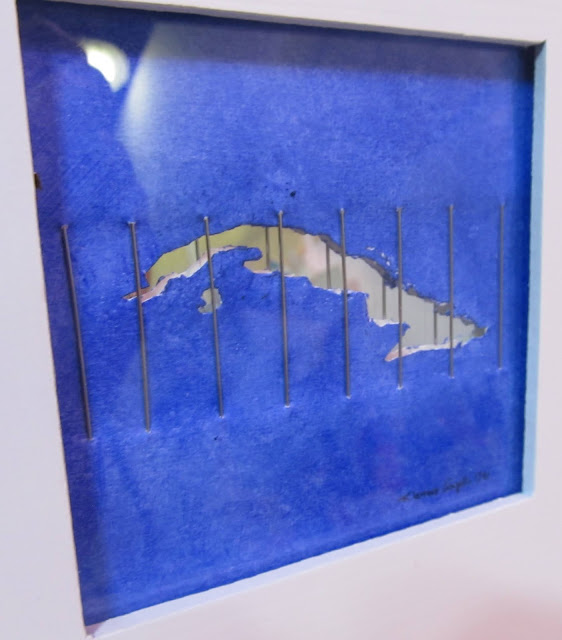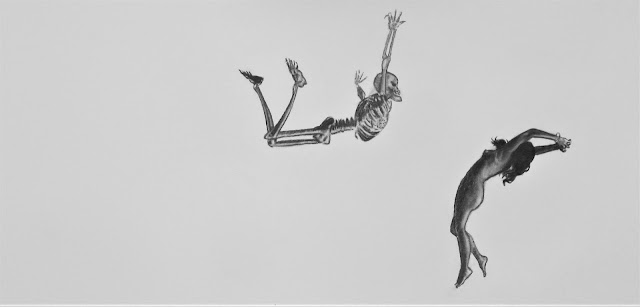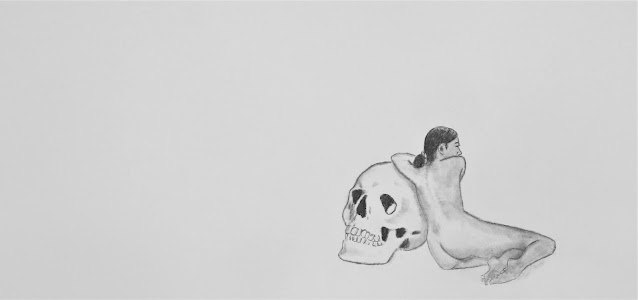New York Times journalist Nikole Hannah-Jones, the leader of that paper's controversial 1619 Project recently showed a spectacular lack of background knowledge on the Cuban dictatorship's well-documented racist history and abuses of its black population by her statement that “If you want to see the most equal, multiracial democ … it’s not a democracy — the most equal, multiracial country in our hemisphere, it would be Cuba,” and then proceeding to cite socialism as her reason to make the statement.
Ms. Hannah-Jones' rosy-eyed view of the Marxist dictatorship's oppression of its citizens, especially its black citizens not only reveal loads about her own political leanings, but also serves as a brilliant example of suspicious lack of research skills about a subject as widely discussed as Cuba's oppressive and racist government.
Had Ms. Hannah-Jones - who visited Cuba in 2008 - bothered to look past her clear admiration for the Marxist government, and bothered to take a quick tour of the facts, she would have discovered that much has been written and documented about racism in Cuba, and it was even one of the earliest subjects addressed by the Washington Post's Eugene Robinson upon his arrival to the DMV a few decades ago from his various Latin American postings.
In his article a couple of decades ago, Cuba Begins to Answer Its Race Question, Robinson, also clearly and openly a very extreme left-wing oriented writer, tried hard to find excuses for the dictatorship, but nonetheless admits that:Academics say that black Cubans are failing to earn university degrees in proportion to their numbers--a situation to which Castro has alluded publicly. The upper echelons of the government remain disproportionately white, despite the emergence of several rising black stars. And while perceptions are difficult to quantify, much less prove true or false, many black Cubans are convinced that they are much less likely than whites to land good jobs--and much more likely to be hassled by police on the street, like Cano's husband, in a Cuban version of "racial profiling."But how about some Cubans inside Cuba discussing the subject?
In primary [Cuban] education, skin color is not mentioned," ... If we are still living in a society where white people have the power, and we don't mention color in education, we are in practice educating [Cuban] children to be white.A lot of hopes have been pinned by many people (who know little about Cuba and the repressive nature of its government) on President Obama's monumental decision to re-establish diplomatic relations with the unfortunate Caribbean island prison of Cuba; but first another Cuban quote:
Cuban history as we teach it is a disgrace, because it is predominantly white history, and explaining the role of black people and mulattoes in building this society and its culture is not given its due importance.
Esteban Morales
University of Havana
Centre for the Study of the Hemisphere and the United States
...to carry on "hiding" the issue [of racism in Cuba] would lead black people to think that "they belong to another country, and that there are two Cuba’s as there were in the 19th century, a black Cuba and a white one."And thus, it is curious to me that in his attempt to re-establish diplomatic ties, our socially conscious President (and his cadre of advisors) back then also - like Ms. Hannah-Jones - appeared to know little or nothing about the way that Afro-Cuban citizens are treated in their own country.
Roberto Zurbano
Director
Casa de las Américas publishing house
Havana
In reference to the President's visit to Cuba, Odette Casamayor-Cisneros, an associate professor of Latin American and Caribbean literatures and cultures at the University of Connecticut and a scholar at Harvard University, and writing in Ms. Hannah-Jones own newspaper, noted in the New York Times that
“The images of the meetings, the agreements, they’re all shameful for many black Cubans — I’m including myself in this — because it’s difficult to feel represented.”Was the projected flow of American tourists expected to help black Cubans in a pre-COVID Cuba? Roberto Zurbano, a Cuban expert in Afro-Cuban identity, race and literature based out of Havana wrote in his 2013 New York Times article that:
Most remittances from abroad — mainly the Miami area, the nerve center of the mostly white exile community — go to white Cubans. They tend to live in more upscale houses, which can easily be converted into restaurants or bed-and-breakfasts — the most common kind of private business in Cuba. Black Cubans have less property and money, and also have to contend with pervasive racism. Not long ago it was common for hotel managers, for example, to hire only white staff members, so as not to offend the supposed sensibilities of their European clientele.Zurbano was subsequently punished by his Marxist government for daring to express that opinion on the pages of Ms. Hannah-Jones employing newspaper. Because that's how Communists roll!
In the same NYT article we read:
One would hope that Ms. Hannah-Jones' exploration of Cuba, a nation with one of the world's worst human rights records, where Amnesty International has been denied access to (except to that bit of Cuba where the Guantanamo Naval Base is located); a nation where gay people were once given lobotomies to "cure" them; and where HIV+ Cubans were detained and segregated in guarded colonies away from the general public, could at least have educated her on the disturbing status of blacks in their own island nation.“They talk a lot here about discrimination against blacks in the United States. What about here?” said Manuel Valier Figueroa, 50, an actor, who was in the park on Monday. “If there’s a dance competition, they’re going to choose the woman who is fair-skinned with light, good hair. If there’s a tourism job, the same.”He added: “Why are there no blacks managing hotels? You don’t see any blacks working as chefs in hotels, but you see them as janitors and porters. They get the inferior jobs.”
Fact: Twice as many African slaves were brought to Cuba than to the United States... twice!
And what really bugs me, in my own pedantic hell, is how often historically and socially clueless American academics, journalists, activists, etc. make spectacularly ignorant statements - as Ms. Hannah-Jones did - about the government of one of the world's most racist dictatorships (a government which talks a talk of equality while walking a walk of institutionalized racism against its own black population) without even mentioning the issue of racism... or is Ms. Hannah-Jones' case praising the socialist dictatorship!
Since then and to its present day, Cuba has a long and agonizing history of racial issues, starting with its long bloody history of slavery, which didn't end on the island until 1886, and continuing through its freedom from Spain, birth of the Republic, and the triumph of the Castro Revolution in 1959. It continues to this day.
Cuba even had its own race war.

General Antonio Maceo, known as "the Bronze Titan." He was the true warrior leader of the Cuban Wars of Liberation. His father was white of French ancestry; his mother was black, of Dominican ancestry. After the first Cuban Liberation War ended in a truce with Spain, some say that Maceo was so disillusioned with the realities of life in Cuba as a black man, that he left Cuba and lived in Panama, until he was called back to lead the Cuban rebels in a new rebellion in 1895. He returned to Cuba and was killed in battle against the Spanish Army in 1896.
In 1912, Black Cubans in Oriente province had enough of the new Cuban government's racist practices and the degrading treatment of Cuban black veterans, who had been the bulk of the Cuban rebels in the wars of independence against Spain. The Cuban government moved on a path of genocide and eventually the United States had to send in troops to end the war between the white Cuban government and the black rebels in Oriente.
As I recall from the CIA Factbook of 1959, on that year the island was about 70% white, about 20% black and mixed, and the rest Chinese, Jewish and other. The Cuban Diaspora which started a few months after the Castro takeover and continues to this day, with the exception of the Mariel boat lift of the 1980s, saw a mass exodus of mostly white Cubans, and as a result the island's racial balance shifted dramatically and although 65% of Cubans self-identify as white in recent censuses, many experts estimate that today the island is actually about 60% black or biracial.
But Cuba's black population has not seen a proportionate share of the power and a quick review of the governing Politburo/Parliament reveals few black faces in the crowd.
"I think silence is worse. The longer nothing is said, the more the racism fermenting underground is rotting the entire nation..."While the Cuban constitution of the 1940s (since then abolished by the Communist government) outlawed segregation and racism on paper, and the current Cuban Constitution guarantees black Cubans the right to stay in any hotel and be served at any public establishment, as it has been documented by many foreign journalists, black Cubans will tell you in private that those rights exist only on paper. They would have told Ms. Hannah-Jones during her visit to Cuba in 2008 - but she probably didn't notice that nearly everywhere that she visited, the presence of the Cuban government was not far, and people fear that presence.
Gerardo Alfonso
singer/songwriter
Havana
The harsh Cuban reality today, Black Cubans will tell you, is that "black Cubans won't be served" and that Cubans, regardless of race are in general barred from places frequented by tourists.
Unfortunately, these things [disparities in the treatment of blacks and whites] are very common in Cuba.Do these Cuban voices from within Cuba itself sound like the subjects of a government whose murdering tyrants' atrocities should be dealt with in silence? -- especially in view of our nation's own racial history and what Ms. Hannah-Jones so expeditiously attempted to document in her controversial 1619 Project?
Ricardo Alarcón Quesada
President of the National Assembly of People's Power
Cuban Parliament
We have practically apartheid in this country sometimes... racism is deeply rooted in Cuba's history and will not disappear overnight.What would she say if she had discovered the "permanent and shameful police harassment of young Cubans of African descent in our streets..." as noted by Leonardo Calvo Cardenas, the Cuban National Vice-Coordinador of the Citizens' Committee for Racial Integration (Comité Ciudadanos por la Integración Racial (CIR))?
Rogelio Polanco Fuentes
Director
Cuban Communist Party-owned Juventud Rebelde newspaper.
The situation for Black Cubans worsened after Castro assumed power... even though there were always racial issues, before Castro in Cuba there had been Black governors, a President of the Senate, Martín Morua Delgado, and also many Congressmen such as the labor leader Jesús Menéndez, a member of the Socialist Party.
When Cuba became a Communist dictatorship, and democracy was lost, the advance of Black Cubans came to a halt.































